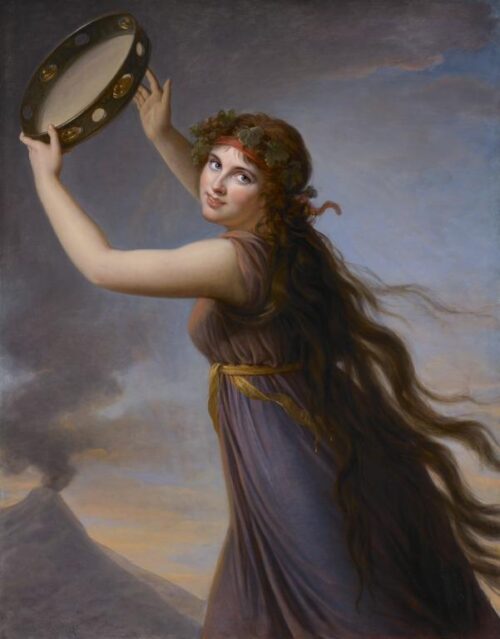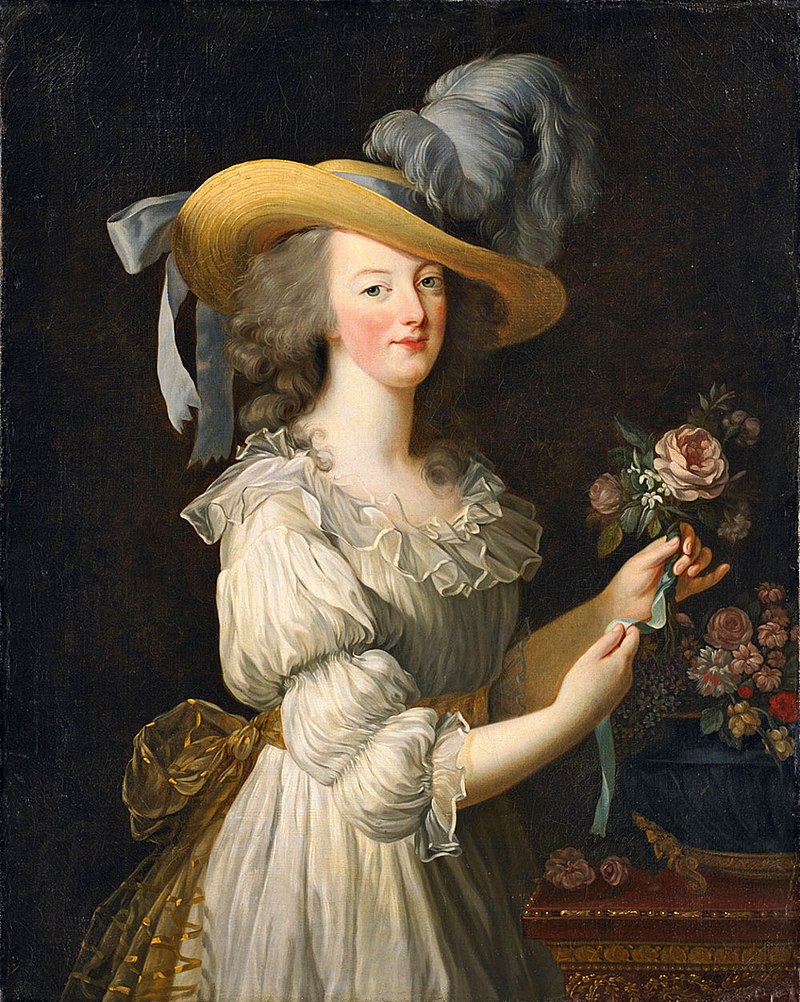
BY JUDY CARMACK BROSS
“In many ways, the 21st-century concept of fashion influencers began in the 18th century when society celebrated its icons,” explains Alicia Caticha, Assistant Professor of Art History at Northwestern University, of the subject of her upcoming lecture at the Alliance Française. “The fashion press flourished, and Marie Antoinette became the greatest fashion influencer of her century, a title she shared with her official painter, Elisabeth Vigee-Lebrun.”
Fiercely independent, fashionable and forward thinking, Elisabeth Vigee-Lebrun was not only a highly skilled painter in the neoclassical style, but one of Naples most stylish hostesses after she fled the French Revolution because of her loyalty to the court. “Philosophers, travelers, and local society all wanted to come to her salon. She became much a part of the intellectual society of Italy,” Caticha says.
Caticha’s May 18 lecture will be the second in the 2022 Symposium on the Arts of France presented by the Alliance Française exploring three centuries of artistic influencers in Les Influenceurs: Les Peintres Francais. The final program, presented by Gloria Groom, Chair of European Painting and Sculpture at the Art Institute of Chicago, will highlight Cezanne.
Caticha, a specialist in 18th and 19th-century sculpture and decorative arts, has published on the history of fashion from the 1700s to the present day. As an undergraduate she became interested in that era and the French Revolution, delving into the art of the period.
“Vigee-Lebrun was the woman behind the painted image of Marie Antoinette and, in many ways, was working with her to develop her image,” she says. “At that time, women’s clothes were five times more expensive than men’s. Marie Antoinette was like influencers today, people either love you or hate you. You just can’t win. Through her paintings, Vigee-Lebrun expanded fashion, illustrating the historical shift style chosen to reflect a neoclassical style.”
“She was one of the few artists who was a royalist—you think of the radical David who went to prison for fighting on the side of the Jacobins. Marie Antoinette continued to choose her as her favorite painter, very unusual for a woman at that time,” Caticha adds.
The daughter of an artist, Vigee-Lebrun went into her family trade, which was common at the time. But like all women of the period, she found it difficult to pursue her craft: “It was very hard to join the Academy—it accepted only four women at a time. The heart of 18th-century training was learning to paint nudes. Women weren’t allowed then to paint nude males. She was lucky to have a family that supported her, but she overcame many challenges and went on to be the Queen’s official painter.”
She developed a canonical neoclassical style, very formal in precision of line and composition, according to Caticha. “Fashion became a lens of her practice, her love of the ancient Greeks paralleled her fashion trends,” she says.
At the salon of 1783, Vigee-Lebrun debuted a portrait of the Queen wearing a white chemise dress with a yellow ribbon at the waist. Deemed inappropriate for someone of the queen’s rank, the portrait was quickly removed from the Salon walls. Of the many names these dresses would have in the future including shifts, the epithet chemise a la reine would forever be linked to Marie Antoinette’s fashionable cotton dresses.
“When you look at her whole body of work in female portraiture, including her painting of Emma Hamilton, you see how she meets women on her own terms,” Caticha shares. “Many of her paintings are of women from the waist up, so you see their faces. They are women in fashionable dresses, but there’s the bigger ideal of art contextualizing their everyday lives.”
Caticha will also present the works of Vigee-Lebrun’s colleague and rival Adelaide Labille Guiard: “They were both true influenceuses of their age and led very parallel lives, except Adelaide was on the side of the Revolution and remained in France. They were both from families of artists and used portraiture and fashion in strategic ways. In the press their personal lives were gossiped about while their art was both lauded and lambasted. These women not only defied gender expectations of the day but became critical political and cultural actors through their art and participation in intellectual social circles across Europe.”

Adélaïde Labille-Guiard, Self-Portrait with Two Pupils, Marie Gabrielle Capet (1761–1818) and Marie Marguerite Carreaux de Rosemond (died 1788), 1785.
Other fashion influencers of the times included Lady Emma Hamilton, Madame Tallien in the 1790s, and then Josephine Bonaparte, who championed flowing, high-waisted dresses of Greek and Roman style—a Met Gala red carpet connection from long ago.
Myriam Bransfield, who received the Prix de l’Alliance Française de Chicago at last night’s 125th Anniversary Gala, has been the visionary force behind the symposiums for the last ten years. She, in turn, credits the Alliance’s Conery Hoffman, Head of Educational Outreach, for the ideas and efforts that make the lectures so enticing: “During COVID when we had to cancel the Symposium, Conery and I were driving champagne around to our patrons and grand patrons to say thank you for sticking with us, and he told me at the time that he had the idea for 2022. The love of all things French is a strong binding force, and the symposiums bring in people who do not necessarily speak French but would love to learn more about the language and the country’s gifts to the world.”
For more information on the Symposium on the Arts of France and Alicia Caticha’s lecture May 18 at 11:30 a.m., visit af-chicago.org or call 312-337-1070.












